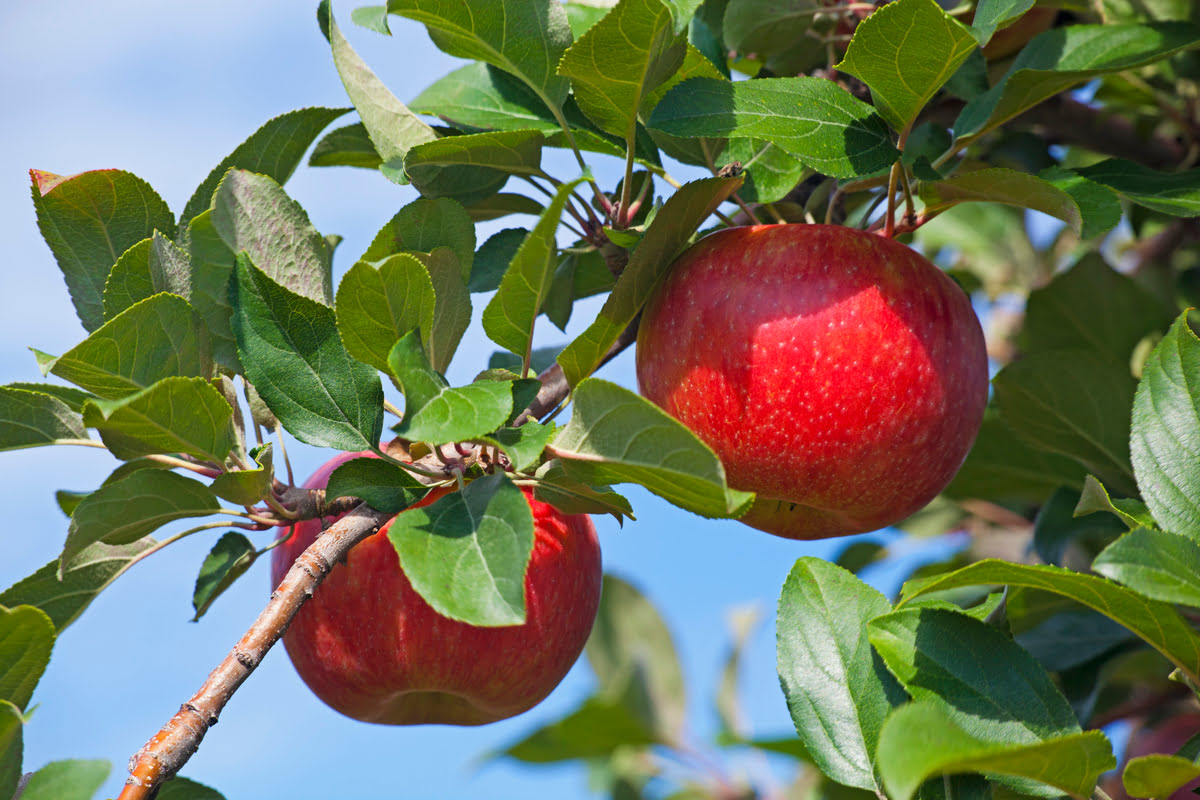Home>Gardening Basics>Getting Started>Why Do Weeds Grow So Fast


Getting Started
Why Do Weeds Grow So Fast
Modified: February 9, 2024
Discover why weeds grow so fast and learn effective strategies for getting started in managing them.
(Many of the links in this article redirect to a specific reviewed product. Your purchase of these products through affiliate links helps to generate commission for Chicagolandgardening.com, at no extra cost. Learn more)
Table of Contents
Introduction
Weeds are the bane of every gardener’s existence. These pesky plants seem to sprout up overnight, taking over our lawns, gardens, and fields, and stealing vital resources from our desired plants. But have you ever wondered why weeds have such an incredible ability to grow fast? It’s not a coincidence or magic; there are scientific reasons behind their speedy growth.
Understanding why weeds grow so fast can help us in controlling and managing them more effectively. By knowing the factors contributing to their rapid growth, we can develop strategies to minimize their impact on our landscapes and maximize the growth and health of the plants we want to cultivate.
In this article, we will explore the various factors that contribute to the fast growth of weeds. We will dive into the mechanisms they use to outcompete other plants, the adaptive advantages they possess, and the impact they have on ecosystems. Additionally, we will discuss methods for controlling and managing these fast-growing intruders.
So, if you’re tired of constantly battling with weeds and want to understand why they seem to have the upper hand, keep reading. By the end of this article, you’ll have a deeper understanding of why weeds grow so fast and how you can gain the upper hand in the fight against them.
Factors Contributing to the Fast Growth of Weeds
Weeds are notorious for their ability to grow at an alarming rate. Understanding the factors that contribute to their rapid growth can help us develop effective strategies for managing them. Let’s explore some of the key factors behind the fast growth of weeds:
- Rapid Reproduction: Weeds reproduce quickly, allowing them to establish themselves and spread rapidly. Many weed species produce vast numbers of seeds that can withstand harsh conditions and remain dormant in the soil for years. When conditions are favorable, these seeds germinate promptly, giving weeds a head start over other plants.
- Efficient Nutrient Usage: Weeds are resourceful when it comes to nutrient utilization. They have the ability to scavenge and extract nutrients from the soil efficiently, often outcompeting other plants in nutrient-poor environments. Weeds possess extensive root systems that can acquire nutrients from deeper soil layers, giving them a competitive edge.
- Weed Adaptation: Weeds have evolved to adapt to a wide range of environmental conditions, making them resilient and adaptable to different climates and soil types. They can grow in varied light conditions, tolerate extreme temperatures, and thrive in disturbed habitats. This adaptability allows them to exploit available resources and outcompete slower-growing plants.
- Competitive Advantage: Weeds have developed strategies to outcompete desired plants for resources such as sunlight, water, and nutrients. Their fast growth rate helps them shade out other plants, reducing their access to sunlight and hindering their growth. Weeds also exhibit aggressive root growth, allowing them to deprive neighboring plants of water and nutrients.
- Allelopathy: Some weed species release potent chemicals known as allelochemicals, which inhibit the growth of other plants. These chemicals can suppress nearby plant growth, giving weeds a competitive advantage in the struggle for resources.
- Genetic Variability: Weeds exhibit high genetic variability, allowing them to adapt to changing conditions and develop resistance to herbicides over time. This genetic flexibility enables weeds to overcome control measures and continue their rapid growth.
These factors work in combination, giving weeds their notorious ability to grow rapidly and outcompete other plants. By understanding these mechanisms, we can develop more effective strategies for weed control and management. In the next section, we will delve deeper into the impact of fast-growing weeds on ecosystems and explore ways to control them without harming desired plants.
Rapid Reproduction of Weeds
One of the key factors contributing to the fast growth of weeds is their ability to reproduce rapidly. Weeds have developed ingenious strategies to ensure the survival and spread of their species, allowing them to establish themselves quickly and dominate an area. Let’s explore some of the mechanisms behind their rapid reproduction:
Seed Production: Many weed species are prolific seed producers. They produce an abundance of seeds that are dispersed in various ways, such as wind, water, animals, or human activity. These seeds have evolved to withstand adverse conditions and can remain viable in the soil for years, waiting for the right conditions to germinate and grow.
Short Generation Time: Weeds typically have short life cycles, which means they can complete their life cycle, from germination to seed production, relatively quickly. This allows them to produce multiple generations in a single growing season, compounding their population growth exponentially.
Germination Trigger: Weeds often have mechanisms in place to ensure quick germination when conditions are favorable. Some weed seeds have specific germination triggers, such as exposure to light, changes in temperature, or disturbance of the soil. These triggers allow the seeds to lie dormant in the soil until suitable conditions arise, ensuring rapid germination and growth.
Opportunistic Nature: Weeds are known for their opportunistic nature, seizing any available space to grow and reproduce. They are quick to take advantage of disturbed habitats, such as areas with bare soil or recently cleared land. These disturbed environments provide an opportunity for weed seeds to establish themselves, giving them a competitive edge over slower-growing plants.
Invasive Characteristics: Some weed species have invasive characteristics, allowing them to outcompete native plants and dominate ecosystems. Invasive weeds can spread rapidly and aggressively, displacing native species and altering habitats. Their ability to reproduce quickly helps them establish large populations and colonize new areas.
Seed Dormancy: Weeds have evolved mechanisms to maintain seed dormancy until conditions are favorable for growth. This dormancy enables the seeds to wait and survive adverse conditions, such as drought, extreme temperatures, or competition from other plants. Once conditions improve, the seeds break dormancy and begin to germinate, ensuring rapid establishment and growth.
The rapid reproduction of weeds gives them a significant advantage over desired plants, allowing them to quickly establish themselves and spread. By understanding the reproductive strategies of weeds, we can develop effective control and management approaches to minimize their impact on our landscapes and prevent further spread.
Efficient Nutrient Usage in Weeds
Weeds are resourceful when it comes to nutrient usage, and this efficiency plays a significant role in their fast growth. They have developed strategies to scavenge and utilize nutrients from the soil more effectively than other plants. Here are some of the key factors that contribute to the efficient nutrient usage in weeds:
Extensive Root Systems: Weeds often possess extensive and robust root systems that allow them to explore a larger volume of soil for nutrients. These roots can penetrate deeper into the soil, accessing nutrients that may be unavailable to other plants. Additionally, the high surface area of their roots facilitates efficient nutrient absorption.
Nutrient Acquisition Mechanisms: Weeds have specialized mechanisms to take up nutrients from the soil more efficiently. They can release acids or enzymes to break down organic matter and release nutrients bound in the soil. Some weeds even form symbiotic relationships with specific soil microorganisms, such as mycorrhizal fungi, which aid in nutrient uptake.
Competitive Ability: Weeds are adept at outcompeting other plants for limited nutrients. They can quickly recognize and respond to nutrient-rich patches in the soil, directing their root growth towards these areas. This ability to allocate resources efficiently gives them a competitive advantage, enabling them to grow faster and overshadow neighboring plants.
Tolerance to Nutrient Stress: Weeds are often more tolerant of nutrient-deficient or nutrient-poor environments compared to desired plants. They have developed adaptations that allow them to thrive in conditions where other plants struggle. Weed species with low nutrient requirements can survive and reproduce even in nutrient-deprived soils, making them highly resilient and fast-growing.
Efficient Nutrient Recycling: Weeds have mechanisms in place to recycle and conserve nutrients within their plant tissues. When nutrients become limiting, instead of shedding leaves or undergoing senescence, weeds can reabsorb and redistribute nutrients from older leaves to younger, actively growing parts of the plant. This nutrient recycling allows them to maintain growth even in nutrient-deficient conditions.
Survival during Nutrient Competition: Weeds have evolved to thrive in highly competitive environments. They can efficiently capture and utilize nutrients even under intense competition from other plants. Weeds often exhibit faster growth rates, allowing them to outcompete desired plants and acquire a larger share of the available nutrients.
Understanding the efficient nutrient usage strategies of weeds can help us develop effective management techniques. By targeting their nutrient acquisition mechanisms and implementing proper soil fertility management, we can control weed growth and promote the growth of desired plants.
Weed Adaptation to Environmental Conditions
Weeds are incredibly adaptable plants, capable of thriving in a wide range of environmental conditions. Their ability to adapt to various climates, soil types, and light conditions is a key factor in their fast growth. Let’s explore some of the ways in which weeds have adapted to their environment:
Climate Adaptation: Weeds have evolved to tolerate a broad range of temperatures, allowing them to grow in both hot and cold climates. Some weed species have developed mechanisms to survive extreme temperatures, while others have adapted to thrive in more moderate conditions. This adaptability allows weeds to establish and spread rapidly, regardless of the climate they encounter.
Soil Adaptation: Weeds can grow in different types of soil, including sandy, clayey, or nutrient-poor soils. They have the ability to tolerate and even thrive in soils with unfavorable conditions, such as low pH, low fertility, or high salinity. This adaptability to different soil types gives them an advantage over other plants that may be more selective in their soil preferences.
Drought Tolerance: Many weed species have developed adaptations to survive in drought-prone areas. They can tolerate extended periods of water scarcity by conserving water, reducing leaf surface area, or developing deep and extensive root systems to access moisture deep in the soil. These drought-tolerant traits allow weeds to prosper in arid or water-limited environments.
Light Requirements: Weeds exhibit versatility in their light requirements, allowing them to grow in both full sun and shaded conditions. Some species can tolerate shade and compete for sunlight in densely vegetated areas, while others thrive in open, sun-exposed areas. This adaptability to different light conditions helps weeds establish and grow rapidly in various habitats.
Resilience to Disturbed Habitats: Weeds have a remarkable ability to colonize and thrive in disturbed habitats. Whether it’s bare soil exposed by construction, logging, or natural disturbances, weeds are quick to establish themselves and take advantage of the available resources. They can readily exploit disturbed areas, outcompeting slower-growing plants and becoming dominant.
Resistance to Pests and Disease: Weeds often display resistance to pests, diseases, and other environmental stresses. They have evolved mechanisms to fend off or tolerate attacks from herbivores and pathogens, making them more successful in withstanding these challenges. This resistance provides weeds with a survival advantage and allows them to grow rapidly, even in the presence of pests or diseases.
By adapting to a wide range of environmental conditions, weeds have become masters of survival and rapid growth. Their ability to thrive in diverse climates, soils, and light conditions makes them formidable competitors for resources. Understanding their adaptations can help us develop effective strategies to manage and control these fast-growing plants.
Competitive Advantage of Weeds
Weeds possess a competitive advantage that enables them to outcompete desired plants and dominate ecosystems. Their ability to grow rapidly and occupy space gives them a significant edge in the struggle for resources. Let’s explore some of the key factors that contribute to the competitive advantage of weeds:
Fast Growth Rate: Weeds have evolved to grow at a rapid rate, allowing them to establish quickly and overshadow neighboring plants. Their ability to utilize resources efficiently and allocate energy towards growth gives them an advantage over other plants, especially in nutrient-rich environments.
Aggressive Root Growth: Many weed species exhibit aggressive root growth, allowing them to explore and exploit a larger volume of soil for water and nutrients. Their extensive root systems can outcompete desired plants for these essential resources, leaving them with limited access and hindering their growth.
Shade Tolerance: Weeds have developed mechanisms to tolerate shade and can thrive in low-light conditions. This adaptability allows them to grow under the shaded canopies of other plants, effectively reducing the light available to their competitors and giving them a competitive advantage.
Allelopathy: Some weed species release allelochemicals, which are toxic substances that inhibit the growth of other plants. These chemicals can prevent the germination of nearby plant seeds or hinder the growth of established plants. Allelopathy gives weeds a selective advantage by suppressing competition from other species.
Early Germination: Weeds often have mechanisms that promote early germination, allowing them to establish themselves before desired plants have a chance to grow. They can sense favorable conditions, such as optimal temperature or soil moisture, and rapidly germinate, gaining a head start in the competition for resources.
High Seed Production: Weeds produce a large number of seeds, increasing their chances of survival and successful establishment. These seeds are often dispersed over a wide area, increasing the likelihood of finding suitable growing conditions. The sheer quantity of seeds produced by weeds ensures a continuous supply, giving them a competitive advantage in colonizing new habitats.
Tolerance to Stress: Weeds have developed mechanisms to tolerate various environmental stresses, such as drought, heat, or poor soil conditions. Their ability to withstand adverse conditions gives them a competitive advantage over desired plants, which may be more sensitive to stress factors and struggle to survive.
By combining these competitive traits, weeds are able to outperform desired plants in resource acquisition and occupy space that could be utilized by more desirable species. Understanding the competitive advantage of weeds allows us to develop effective strategies for their control and management, promoting the growth of desired plants and maintaining balanced ecosystems.
Impact of Fast-growing Weeds on Ecosystems
The fast growth of weeds can have significant impacts on ecosystems, disrupting natural habitats and affecting biodiversity. Let’s explore the various ways in which fast-growing weeds can influence ecosystems:
Competition for Resources: Fast-growing weeds often outcompete native plants for essential resources such as sunlight, water, and nutrients. They shade out and deprive native species of these resources, leading to reduced growth and productivity of native vegetation. This competition can result in a shift in plant community composition and a decrease in overall biodiversity.
Altered Habitat Structure: Weeds can change the structure and composition of ecosystems. Their vigorous growth can result in dense thickets or dense monocultures, altering the natural habitat structure and reducing the availability of suitable habitat for native wildlife. This transformation can disrupt the balance and functionality of ecosystems, affecting the abundance and diversity of native species.
Reduced Native Plant Diversity: As fast-growing weeds colonize an area, they can outcompete and displace native plant species, leading to a decline in native plant diversity. This reduction in plant diversity can have cascading effects on other organisms that depend on native plants for food, shelter, and breeding habitat.
Changes in Soil Composition: Weeds with aggressive root systems can alter soil composition by depleting nutrients, increasing soil erosion, and affecting soil moisture levels. These changes can have detrimental effects on soil fertility and native plant communities, further exacerbating the dominance of fast-growing weeds.
Impacts on Wildlife and Pollinators: The proliferation of fast-growing weeds can have indirect impacts on wildlife and pollinators. Weeds may provide lower-quality food sources for native wildlife, affecting their health and reproductive success. Additionally, invasive weeds can disrupt pollination networks by competing with native flowering plants for pollinators, potentially leading to a decline in pollinator populations.
Invasive Spread: Fast-growing weeds often have invasive characteristics that allow them to spread rapidly and colonize new areas. This invasive behavior can result in the displacement of native species and the formation of monocultures dominated by fast-growing weeds. These monocultures are less resilient to environmental changes and can have long-term negative effects on ecosystem health.
While fast-growing weeds may have short-term advantages in terms of growth and reproduction, their long-term impact on ecosystems can be detrimental. Managing and controlling these weeds is crucial to preserving the integrity and function of natural ecosystems, promoting native biodiversity, and ensuring the sustainability of our natural habitats.
Control and Management of Fast-growing Weeds
Controlling and managing fast-growing weeds is essential to maintain the health and productivity of our landscapes. By implementing effective strategies, we can reduce the impact of weeds and promote the growth of desired plants. Here are some methods commonly used in the control and management of fast-growing weeds:
Preventive Measures: Prevention is key to avoiding weed infestations. Implementing proper sanitation practices, such as removing weeds before they set seeds, can help prevent the spread of weed populations. Additionally, regularly monitoring and inspecting garden beds, lawns, and agricultural fields can help detect and address weed issues early on.
Cultural Practices: Cultural practices can be employed to create an unfavorable environment for weeds while promoting the growth of desired plants. This includes practices like utilizing proper irrigation techniques, maintaining healthy soil through regular amendments, planting appropriate ground covers or companion plants to suppress weed growth, and practicing proper mulching to smother emerging weeds.
Mechanical Control: Manual removal and mechanical control methods are effective for small-scale weed management. This includes pulling weeds by hand, hoeing, or using mechanized tools like weed trimmers or brush cutters. Mechanical methods are most effective when weeds are in their early growth stages or before they produce seeds.
Chemical Control: Herbicides are commonly used for large-scale control of fast-growing weeds. Selective herbicides specifically target weeds while minimizing harm to desired plants. Non-selective herbicides can be used for spot treatments or complete vegetation removal in areas where no desirable plants are present. It is essential to follow label instructions and use herbicides responsibly to minimize environmental impact.
Biological Control: Biological control involves using natural enemies, such as insects or pathogens, to target and control specific weed species. This method is usually employed when dealing with invasive weeds. Biological control agents are carefully selected and introduced to reduce weed populations without causing harm to native flora or fauna.
Integrated Weed Management (IWM): IWM combines multiple control methods to effectively manage fast-growing weeds. This holistic approach considers factors such as plant biology, timing of treatments, cultural practices, and the selection of appropriate control methods. By combining different techniques, IWM aims to minimize the impact of weeds while fostering the growth of desired plants.
Regular Maintenance: Ongoing maintenance is vital to prevent weed resurgence. This includes practices such as regular mowing, trimming, and weed monitoring. Removing weeds before they are able to produce seeds and practicing good sanitation habits can reduce the long-term impact of fast-growing weeds.
Remember, a proactive and integrated approach to weed control is often more effective than relying solely on a single method. It’s essential to assess the specific situation and tailor control strategies accordingly. By implementing proper weed management techniques, we can ensure healthier and more resilient landscapes, allowing desired plants to thrive while mitigating the dominance of fast-growing weeds.
Conclusion
Fast-growing weeds can be a constant challenge for gardeners, farmers, and land managers. Their ability to grow rapidly, reproduce prolifically, and outcompete desired plants can disrupt ecosystems, reduce biodiversity, and impact agricultural productivity. Understanding the factors contributing to their rapid growth, such as efficient nutrient usage, adaptability to environmental conditions, and competitive advantages, is crucial in developing effective control and management strategies.
Preventive measures, cultural practices, mechanical and chemical control, biological control, and integrated weed management all play important roles in minimizing the impact of fast-growing weeds. Implementing these strategies in a proactive and consistent manner can help reduce weed populations and promote the growth of desired plants.
It’s also important to recognize the significance of early detection and timely action in weed management. By regularly monitoring landscapes and implementing control measures in the early stages of weed infestations, we can prevent their rapid spread and minimize the resources they consume.
In conclusion, while fast-growing weeds can be a formidable challenge, they can be effectively managed through a combination of preventive practices, diligent maintenance, and appropriate control methods. By understanding their biology and employing sustainable management strategies, we can control weed growth, protect native biodiversity, and maintain the health and productivity of our landscapes. Continuous vigilance, timely intervention, and a holistic approach to weed management are key to successfully combating the fast growth of weeds and ensuring the vitality of our environments.







